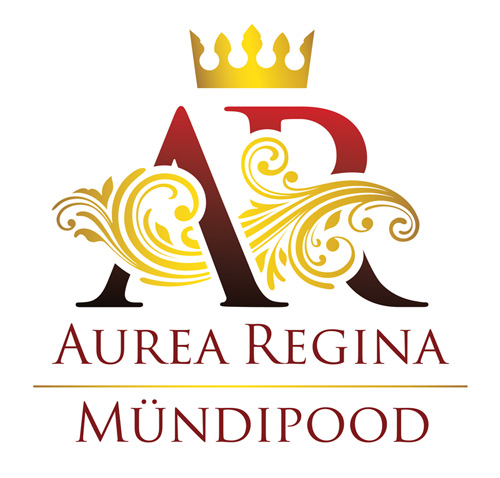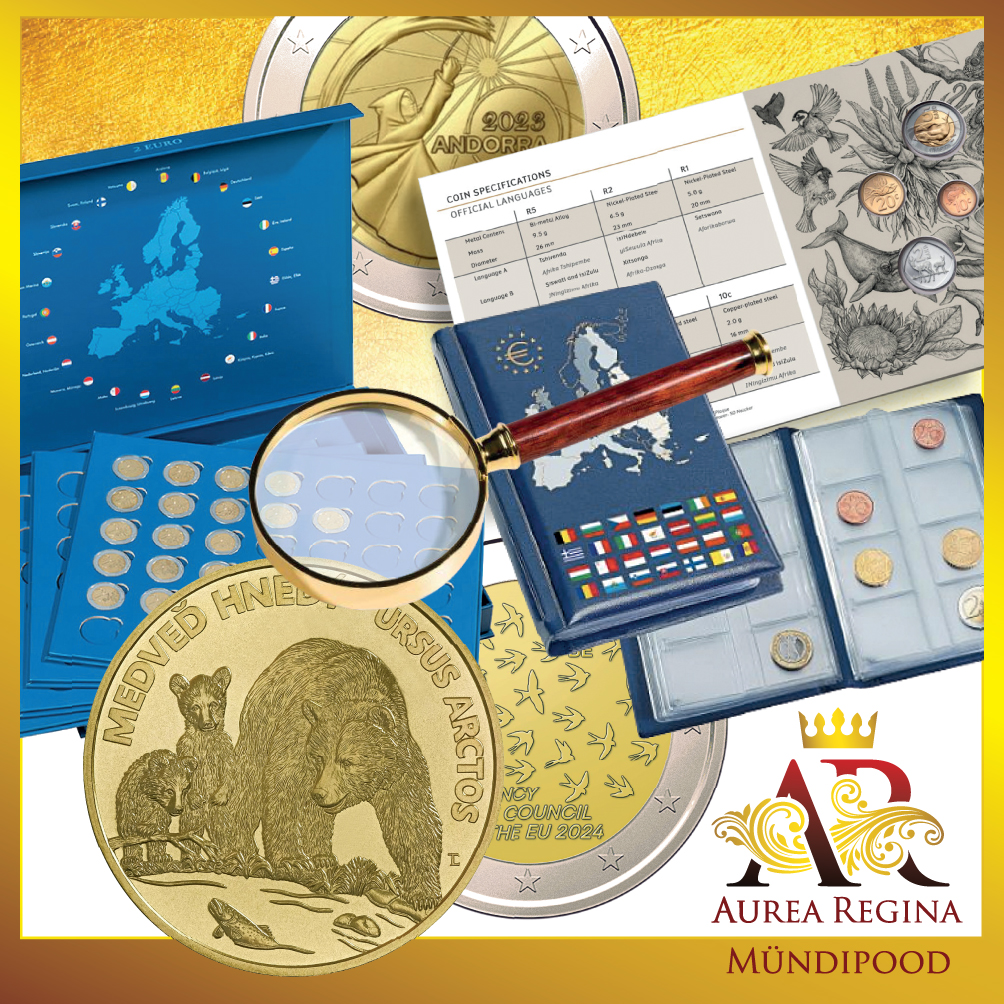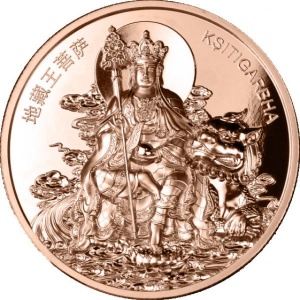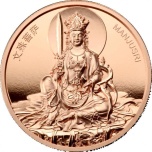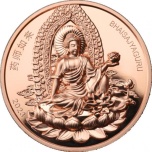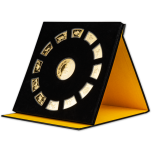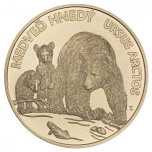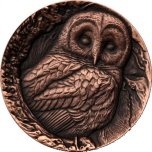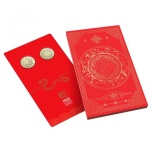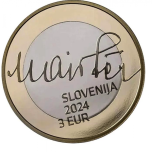Twelve Heavenly Generals in the Chinese Zodiac - Ksitigarbha VS Snake-Samoa 0,25$ 2025 copper coin, 45 g
Unit: tk
Price:
39,00 €
Face value: Samoa 0,25$
Weight: 40gr
Diameter: 40 mm
Mintage: 6666
Proof copper coin with partial gold plating
In East Asian Buddhism, the Twelve Heavenly Generals or Twelve Divine Generals are the protective deities.
Weight: 40gr
Diameter: 40 mm
Mintage: 6666
Proof copper coin with partial gold plating
In East Asian Buddhism, the Twelve Heavenly Generals or Twelve Divine Generals are the protective deities.
Kollektsioon
Face value: Samoa 0,25$
Weight: 40gr
Diameter: 40 mm
Mintage: 6666
Proof copper coin with partial gold plating
In East Asian Buddhism, the Twelve Heavenly Generals or Twelve Divine Generals are the protective deities.
Weight: 40gr
Diameter: 40 mm
Mintage: 6666
Proof copper coin with partial gold plating
In East Asian Buddhism, the Twelve Heavenly Generals or Twelve Divine Generals are the protective deities.
39,00 €
Face value: Samoa 0,25$
Weight: 40gr
Diameter: 40 mm
Mintage: 6666
Proof copper coin with partial gold plating
In East Asian Buddhism, the Twelve Heavenly Generals or Twelve Divine Generals are the protective deities, or yaksha, of Bhaisajyaguru, the buddha of healing. They are introduced in the Bhai?ajyaguruvaiduryaprabharaja Sutra. They are collectively named Shí'èr Shén Jiang Mahala--Honji to this General is Bhaisajyaguru, It is the protective deity of zodiac rabbit.
Weight: 40gr
Diameter: 40 mm
Mintage: 6666
Proof copper coin with partial gold plating
In East Asian Buddhism, the Twelve Heavenly Generals or Twelve Divine Generals are the protective deities, or yaksha, of Bhaisajyaguru, the buddha of healing. They are introduced in the Bhai?ajyaguruvaiduryaprabharaja Sutra. They are collectively named Shí'èr Shén Jiang Mahala--Honji to this General is Bhaisajyaguru, It is the protective deity of zodiac rabbit.
39,00 €
Similar products
Weight: 29 g x 12 tk + 1 x 89 g
Metal: Cu/NI
Diameter: 12 x 44 x 26,8 mm ; 1 x 65 mm
Face value: 1/2 $ x 13
Quality: Proof-like
Mintage: 18 888 coins
Featuring the 12 lunar animals in traditional Chinese painting art on fan-shaped coins – the Chinese character of each animal is represented on individual designs.
The 12 zodiac animals are placed around one big coin with a diameter of 65 mm – all coins are refined with 24K Gold Plating.
The beautiful collection comes with a lucky mintage of 18,888 pieces – perfect as a subscription program or complete set!
Metal: Cu/NI
Diameter: 12 x 44 x 26,8 mm ; 1 x 65 mm
Face value: 1/2 $ x 13
Quality: Proof-like
Mintage: 18 888 coins
Featuring the 12 lunar animals in traditional Chinese painting art on fan-shaped coins – the Chinese character of each animal is represented on individual designs.
The 12 zodiac animals are placed around one big coin with a diameter of 65 mm – all coins are refined with 24K Gold Plating.
The beautiful collection comes with a lucky mintage of 18,888 pieces – perfect as a subscription program or complete set!
259,00 €
Face value: 5 €
Diameter: 34 mm
Weight: 19.1 g
Metal: Brass
Mintage: 45,000
The obverse of this euro collector coin is dominated by the head of a brown bear in profile. Centrally positioned above the head is the Slovak coat of arms. The denomination and currency ‘5 EURO’ appear along the lower left edge. Inscribed along the upper edge are the name of the issuing country and the year of issuance: ‘SLOVENSKO 2023’. At the right edge is the mint mark of the Kremnica Mint (Mincovňa Kremnica), consisting of the letters ‘MK’ placed between two dies.
Reverse:
On the reverse is a depiction of a female bear and her two cubs hunting fish. Inscribed along the upper edge are the Slovak name for the brown bear ‘MEDVEĎ HNEDÝ’ and the animal’s scientific name ‘URSUS ARCTOS’. At the lower right edge are the stylised initials ‘TL’, referring to the coin’s designer Tomáš Lamač.
The brown bear is Slovakia’s largest predator. It has a stocky body, small eyes and ears, a short tail, pronounced claws, and thick fur that is 8 to 12 cm long and comes in a wide range of shades from light brown to almost black. The adult male can weigh up to 350 kg. Brown bears in Slovakia are concentrated in the central, northern and north-eastern mountain areas. The brown bear is an omnivore that prefers to live in mixed and coniferous forests. Its diet is 90% vegetable matter with the remaining 10% consisting of carrion, smaller animals, insects and, occasionally, sick or injured hooved game. Bears hibernate in dens from around early November to April. Female bears and their cubs are the first to enter the dens and the last to emerge from them. Male bears seek out females only during the mating season, usually from the end of April to the beginning of August. The cubs are born during January and February in the safety of the winter den. At birth they are blind, have short fur and weigh less than 500 g. Bears in the wild can live to be more than 30 years old.
Diameter: 34 mm
Weight: 19.1 g
Metal: Brass
Mintage: 45,000
The obverse of this euro collector coin is dominated by the head of a brown bear in profile. Centrally positioned above the head is the Slovak coat of arms. The denomination and currency ‘5 EURO’ appear along the lower left edge. Inscribed along the upper edge are the name of the issuing country and the year of issuance: ‘SLOVENSKO 2023’. At the right edge is the mint mark of the Kremnica Mint (Mincovňa Kremnica), consisting of the letters ‘MK’ placed between two dies.
Reverse:
On the reverse is a depiction of a female bear and her two cubs hunting fish. Inscribed along the upper edge are the Slovak name for the brown bear ‘MEDVEĎ HNEDÝ’ and the animal’s scientific name ‘URSUS ARCTOS’. At the lower right edge are the stylised initials ‘TL’, referring to the coin’s designer Tomáš Lamač.
The brown bear is Slovakia’s largest predator. It has a stocky body, small eyes and ears, a short tail, pronounced claws, and thick fur that is 8 to 12 cm long and comes in a wide range of shades from light brown to almost black. The adult male can weigh up to 350 kg. Brown bears in Slovakia are concentrated in the central, northern and north-eastern mountain areas. The brown bear is an omnivore that prefers to live in mixed and coniferous forests. Its diet is 90% vegetable matter with the remaining 10% consisting of carrion, smaller animals, insects and, occasionally, sick or injured hooved game. Bears hibernate in dens from around early November to April. Female bears and their cubs are the first to enter the dens and the last to emerge from them. Male bears seek out females only during the mating season, usually from the end of April to the beginning of August. The cubs are born during January and February in the safety of the winter den. At birth they are blind, have short fur and weigh less than 500 g. Bears in the wild can live to be more than 30 years old.
14,90 €
Face value: Samoa 0,25$
Weight: 47 gr
Diameter: 40 mm
Mintage: 3 000
The tawny owl (Strix aluco), also called the brown owl, is commonly found in woodlands across Europe to western Siberia, and has seven recognized subspecies. It is a stocky, medium-sized owl, whose underparts are pale with dark streaks, and whose upper body may be either brown or grey. (In several subspecies, individuals may be of either color.) The tawny owl typically makes its nest in a tree hollow where it can protect its eggs and young against potential predators. It is non-migratory and highly territorial: as a result, when young birds grow up and leave the parental nest, if they cannot find a vacant territory to claim as their own, they will often starve
Weight: 47 gr
Diameter: 40 mm
Mintage: 3 000
The tawny owl (Strix aluco), also called the brown owl, is commonly found in woodlands across Europe to western Siberia, and has seven recognized subspecies. It is a stocky, medium-sized owl, whose underparts are pale with dark streaks, and whose upper body may be either brown or grey. (In several subspecies, individuals may be of either color.) The tawny owl typically makes its nest in a tree hollow where it can protect its eggs and young against potential predators. It is non-migratory and highly territorial: as a result, when young birds grow up and leave the parental nest, if they cannot find a vacant territory to claim as their own, they will often starve
39,00 €
Face valie 2 x 0,5 AUS
Metal:
weight_ 2 x 9 g
Diameter: 25 mm
Mintage: 30 000
This two-coin set celebrates the Year of the Snake and is an auspicious and traditional gift or collectible for Lunar New Year. People born in the year of the Snake are said to be wise, calm and observant. The set features the serene Snake, amongst auspicious bamboo, a symbol of virtue; and the Chinese lunar calendar represented as a wheel. Good luck and good fortune for 2025.
To celebrate the Lunar Year of the Snake, the Royal Australian Mint will release this 2025 $1 Uncirculated Two-Coin Set featuring the creative and serene Snake and the Lunar calendar wheel. The set is designed to appeal to collectors or those seeking an auspicious and traditional gift for Lunar New Year. The Snake is the sixth of the twelve signs in the Chinese Zodiac. According to legend, twelve animals participated in a race across a river to allow the Jade Emperor to establish the order of the signs of the Chinese horoscope.
Metal:
weight_ 2 x 9 g
Diameter: 25 mm
Mintage: 30 000
This two-coin set celebrates the Year of the Snake and is an auspicious and traditional gift or collectible for Lunar New Year. People born in the year of the Snake are said to be wise, calm and observant. The set features the serene Snake, amongst auspicious bamboo, a symbol of virtue; and the Chinese lunar calendar represented as a wheel. Good luck and good fortune for 2025.
To celebrate the Lunar Year of the Snake, the Royal Australian Mint will release this 2025 $1 Uncirculated Two-Coin Set featuring the creative and serene Snake and the Lunar calendar wheel. The set is designed to appeal to collectors or those seeking an auspicious and traditional gift for Lunar New Year. The Snake is the sixth of the twelve signs in the Chinese Zodiac. According to legend, twelve animals participated in a race across a river to allow the Jade Emperor to establish the order of the signs of the Chinese horoscope.
49,00 €
Face vakue: 3 euro
Diameter; 32 mm
Weight: 15,0 g
Alloy: Bimetal;CuNi, nordic gold
Quality: UNC
Commemorative coin dedicated to the Day of Slovenian Sport.
• The Day of Slovenian Sports is a national holiday celebrating the international successes of Slovenian athletes.
Diameter; 32 mm
Weight: 15,0 g
Alloy: Bimetal;CuNi, nordic gold
Quality: UNC
Commemorative coin dedicated to the Day of Slovenian Sport.
• The Day of Slovenian Sports is a national holiday celebrating the international successes of Slovenian athletes.
9,00 €
